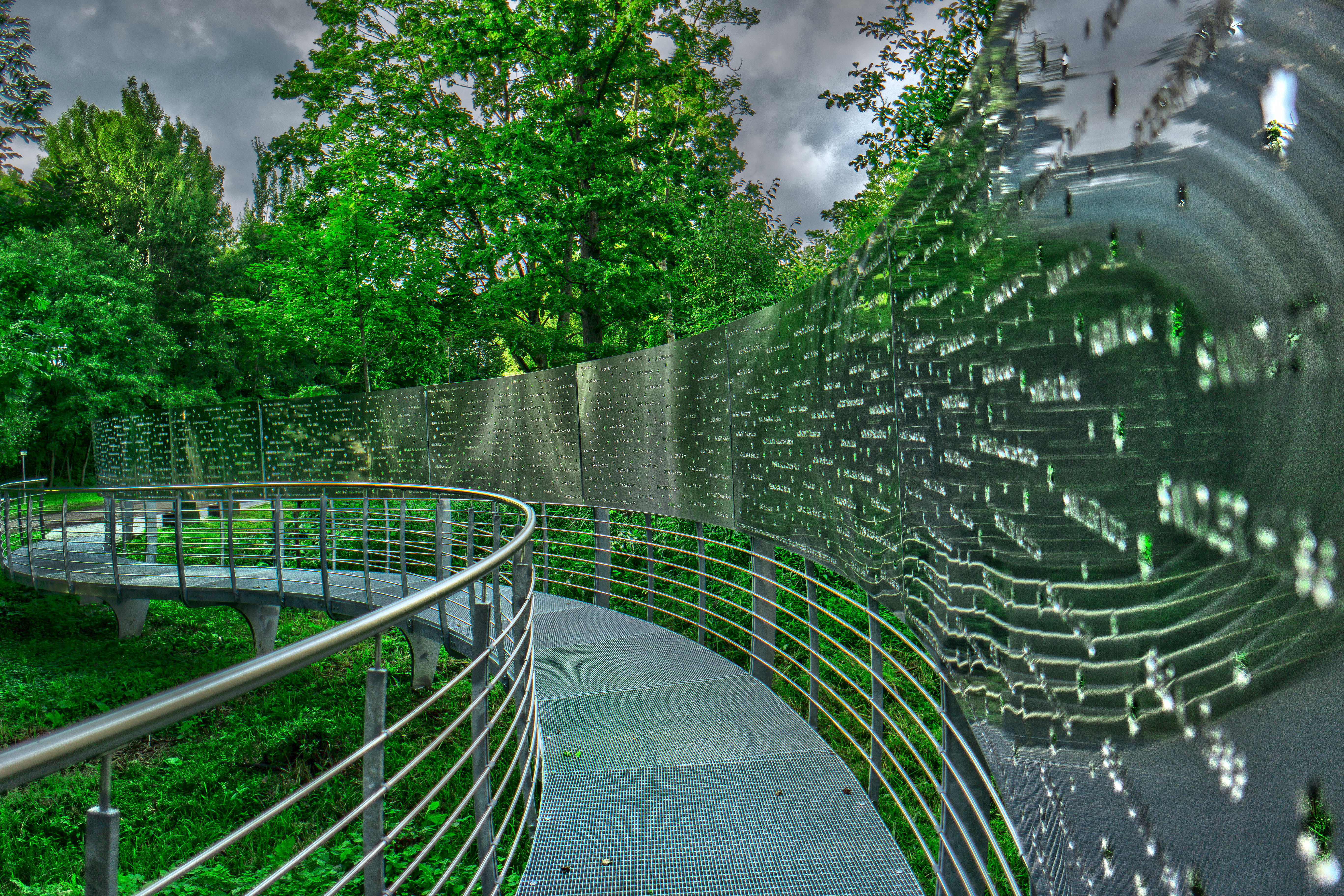Jewish Heritage
|
The old Jewish and Karaite cemetery in Biržai town (heritage code 37600) Kluono st. 10A, 10B, Biržai, WGS 56.210172, 24.764802 The cemetery contains 1627, 19th and 20th centuries headstones of local Jewish community. The Jews of Biržai have been buried in this location since the establishment of the city, unfortunately, the older headstones from 17th - 18th centuries were not preserved. The cemetery is one of the largest and most extensively studied Jewish cemeteries in Lithuania. |
 |
|
The grave and Memorial of Holocaust victims (heritage code 10818) Krūmynų st. 2A, Paežeriai village (Pakamponys), Parovėja Eldership, Biržai District, WGS 56.224332, 24.780825 The mass grave in Paežeriai village feature 2400 Jews (720 men, 780 women, 900 children) and about 90 Lithuanians. Jews from Biržai ghetto (neighbourhood between Apaščia river and Vilnius street, along Karaimų street) were brought here to be executed and buried in ditches that were dug in advance on 8 August 1941. In 1955 the location was marked with a monument, while the remains of the victims were moved to this grave. On the 16th of August 2019, a memorial to the Holocaust victims of Biržai was unveiled with the known names of the victims written on a metal wall. The memorial forms a bridge across water in Astravas grove – the exact site of the death pits in which hundreds of Jewish were buried. It's made from sheets of metal that have etched into them 522 names of the known victims, each accompanied by a Star of David – little ones for children and larger ones for adults. The memorial bridge was designed by South African architect Dr Joseph Rabie, whose great grandparents were from Biržai. |
|
|
The former Great Beith Midrash (the Great Wooden Synagogue), Karaimų st. 15, Biržai During the period of the First Republic of Lithuania, in Biržai there were the Great brick synagogue, two wooden Beit Midrash, one of which was called the Great Beith Midrash (the Great Wooden Synagogue) ‒ which later was rebuilt into brick. The former Great Synagogue, Žemaitės st. 22, Biržai (pictured) The old single-storey synagogue, built of bricks and stones on Žemaitės street 22, on the shore of Apaščia river, survived to our present day. This synagogue also hosted a yeshiva (religious school), founded by B. Movši and A. L. Bernstein. The former Hasidic synagogue, S. Dagilio st. 14, Biržai (pictured) The wooden Chabad Hasidic synagogue was rebuilt into a large brick synagogue in 1938‒1939 (architect M. Lurje). Nowadays, three buildings of the former synagogues have survived. Unfortunately, they have been extensively rebuilt |
|
|
Vabalninkas Jewish Summer Synagogue / Vabalninkas Synagogue Building Complex (heritage code 32307) Pirties st. 3, Vabalninkas town, Biržai District, WGS 55.980059, 24.748732 The brick, rectangular single-storey building with an attic was built in Vabalninkas on Pirties street 3 in the early 20th century as a summer synagogue. Curently the building hosts a community funeral home. |
 |
|
Vabalninkas Jewish Winter Synagogue / Vabalninkas Synagogue Building Complex (heritage code 32306) Pirties st. 4, Vabalninkas town, Biržai District, WGS 55.979893, 24.748501 The brick, rectangular single-storey building with an attic was built in Vabalninkas on Pirties street 4 in the early 20th century as a winter synagogue. The facade still featuresniches for arched windows. During the Interwar period this synagogue also hosted a Jewish school - yeshiva. Currently the building hosts the bathhouse of Vabalninkas town. |
 |
|
"Sėla" Vabalninka section of Biržai region museum Žoline a. 10, Vabalninkas, Biržų district. week, WGS 55.98095, 24.74751 in the former, the name of the Jewish Slavina family. An information stand about Jewish life in Vabalninka has been set up next to it, and an exposition has been installed in the basement, from the idyllic pre-war life in Vabalninka to the most painful experience of the town, including the destruction of the Jewish community in Vabalninka during World War II.
Photo author: J. Juška |
.jpg) |
|
The old Jewish cemetery of Vabalninkas (heritage code 38289) Martišiūnų st., Vabalninkas town, Biržai District, WGS 55.980273, 24.759876 Vabalninkas cemetery on Martišiūnų street features several hundreds of gravestones of all shapes and sizes, made of brownish, grey, black, hewn granite or concrete, mostly with hammered memorial inscriptions in Hebrew language. This cemetery became the final resting place of the Jews, who lived in Vabalninkas and around the town. |
 |
|
Nemunėlio Radviliškis place of Jewish massacre and mass grave (heritage code 11874) Pagojų village, Nemunėlio Radviliškio Eldership, Biržai District, WGS 56.395162, 24.794359 The mass massacre of the Jews of Nemunėlio Radviliškis took place here, in Pagojai village in 1941. Based on various sources, the massacre took the lives of 80 Jews. The cemetery is marked with a triangular black granite monument, featuring the sign of cultural heritage, a hexagonal star and and an inscription The graves of Holocaust victims in Lithuanian and English languages. The pyramid-shaped gravestone features metal plates with an inscription: This place witnessed the death of about 80 Jews - children, women and men, murdered by Nazis and local collaborators. The 153 sq. m territory is fenced. |
 |
.png)


